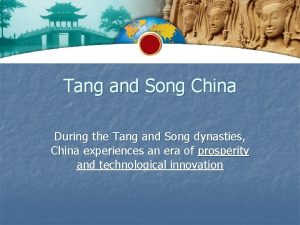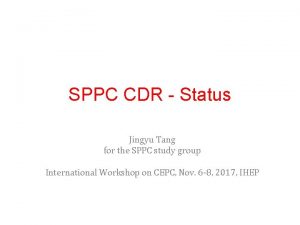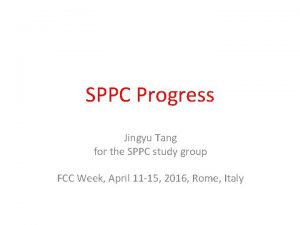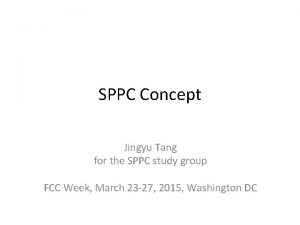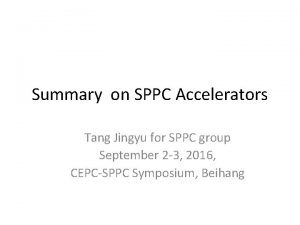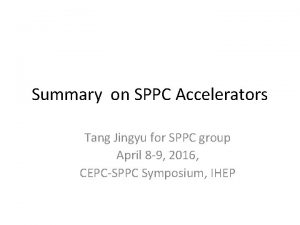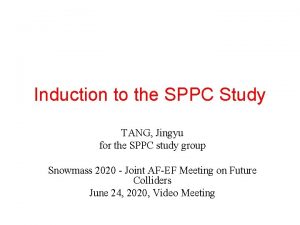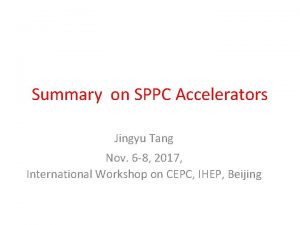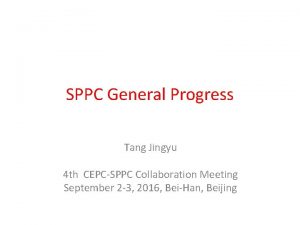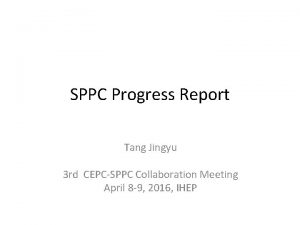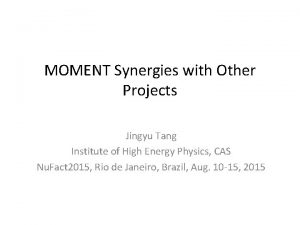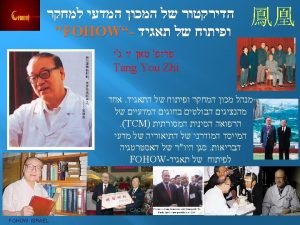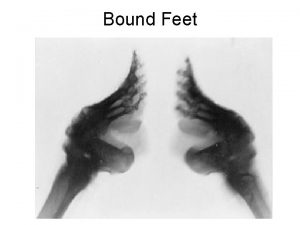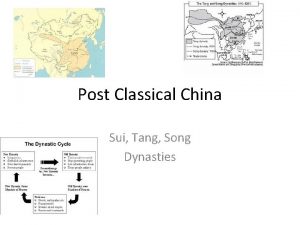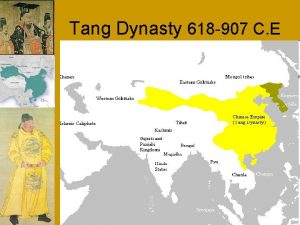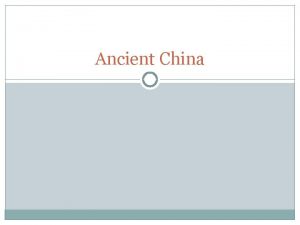SPPC Study Status TANG Jingyu for the SPPC




















- Slides: 20

SPPC Study Status TANG, Jingyu for the SPPC study group 2020 CEPC Workshop, Oct. 26 -28, Shanghai

Outline • • Ongoing SPPC study Accelerator physics studies R&D efforts Summary 2

Ongoing SPPC Study • Ongoing studies – A very limited resource working on the accelerator physics studies – Strong R&D efforts on high-field magnets which is integrated in the national effort for HT superconducting technology – Will follow the CEPC study in the TDR stage 3

SPPC main parameters Parameter Circumference C. M. energy Dipole field Injection energy Number of IPs Nominal luminosity per IP Beta function at collision Circulating beam current Bunch separation Bunch population SR power per beam SR heat load per aperture @arc Unit km Te. V T Te. V cm-2 s-1 m A ns MW W/m Value Pre. CDR 54. 4 70. 6 20 2. 1 2 1. 2 e 35 0. 75 1. 0 25 2. 0 e 11 2. 1 45 CDR Ultimate 100 75 125 -150 12 20 -24 2. 1 4. 2 2 2 1. 0 e 35 0. 7 25 1. 5 e 11 1. 1 13 4

Collider Accelerator Physics -Parameter list (no update since 2017. 5) 5

Accelerator Physics • Still active: – Longitudinal dynamics (collider and injector chain): Zhang Linhao, Tang Jingyu – Instabilities: Zhang Linhao, Wang Lijiao, Tang Jingyu – Beam-beam and Luminosity leveling: Wang Lijiao, T. Sen (FNAL) – Lattice, layout, dynamics aperture: Chen Yukai, Wang Yiwei – Injector chain AP: Zhang Linhao (p-RCS), Wang Xiangqi (USTC, SS) • Several papers under preparation 6

Injector chain (for proton beam) p-Linac: proton superconducting linac p-RCS: proton rapid cycling synchrotron MSS: Medium-Stage Synchrotron SS: Super Synchrotron Ion beams have dedicated linac (ILinac) and RCS (I-RCS) 7

Lattice design Wang Yiwei, Chen Yukai • Bypass issue with CEPC – Bypass scheme study to be compatible with the CEPC, in order to accommodate CEPC and SPPC simultaneously in a same tunnel – Very challenging, following the CEPC study evolution CEPC Layout 8

Longitudinal beam dynamics Zhang Linhao, Tang Jingyu • The work concerning long. Dynamics in both Collider and injector chain (five accelerators in series) • Concerns: – – – Bunch filling schemes Luminosity leveling schemes Instabilities Requirement to the RF systems Global study with the injector accelerators • Recent study focusing on: – Instabilities suppression in the collider – Longitudinal dynamics in the injector chain, especially bunch splitting in the MSS 9

Bunch splitting in MSS Ø Motivation – Mitigate the pileup effects and collective instabilities of a single bunch in the SPPC – Bunch spacing: 25 ns (five-splitting of single bunch) Ø Bunch splitting methods in proton synchrotrons (1) Debunching and rebunching (2) Multi-harmonic RF bunch splitting Triple-splitting in LHC/PS

Bunch splitting at the MSS injection energy Beam loss rate 0. 094%

Comparison and explanation Phase Injection-Gaussian Inj. -truncated Gaus. Extraction-Gaussian Beam loss rate 1. 74% 0. 094% 0 Max. particle deviation 1. 7% 1. 4% 4. 0% Total longitudinal emittance growth 8. 4% 9. 1% 2. 59 Ø Theoretical explanation for the behavior of bunch splitting particles are more prone to oscillate around the center

Luminosity leveling and beam-beam effects • Recent work on • Beam-beam compensation schemes • Flat beam optics Wang Lijiao , Tang Jingyu, collab. with Tanaji Sen (FNAL) • Mitigation of long range interactions • Dynamic aperture limited mainly by the long-range B-B effects • Sufficiently large separations at the parasitic interactions: large crossing angle, but luminosity loss concern • Compensation methods: current wires, electron lenses • Flat beam optics • Flat beam spots instead of round ones at the IP give the possibility

Long-range interaction mitigation DA for different * with increasing 1 st parasitic separation Tune footprint with wire compens. (violet points) and without compens. (green points)

Flat beam optics Ø Motivations l Small * requires a large crossing angle that will cause luminosity reduction if without crab cavities l Flat beam optics ( x* y*) can partially solve this problem (larger * in the crossing plane) l The method was initially proposed for the LHC upgrade Ø In SPPC l Different schemes studied: with constant first parasitic separation (a), with a constant crossing angle (b) (a) (b)

Technical Challenges • There are many technological challenges in building future p-p colliders, among them the most crucial is high-field SC magnets – Currently the only R&D effort for SPPC, supported by a CAS research program to promote high-temperature superconducting technology, which involves different CAS institutions and also some companies – In this workshop, presentations and discussion in the CIPC session: Oct 27, 14: 00 -16: 00, Grand Ballroom C 16

Status and Plan of the High Field Magnet R&D for Future Accelerators Prepared by Q. J. Xu Performance of the world 1 st IBS racetrack coil at 10 T • Two racerack coils with 100 m long IBS tapes have been fabricated and tested at 10 T background field. • The Ic in the coil reached 86. 7% of the short sample at 10 T. 100 m long Ba-122 -7 tape Supercond. Sci. Technol. 2020, in press Comments from SUST reviewers: a) …the new results that can have a strong impact on the conductor and magnet community. b) …demonstrated the great potential of Iron-Based Superconductor in the development of next-generation accelerators. …… 17

Status of the China-CERN HL-LHC CCT Project Layout of the HL-LHC Magnets and Contributors Performance of the 1 st full-length prototype magnet from China: Fabrication completed in May 2020, and the performance test at 4. 2 K completed in August 2020. both apertures reached the ultimate current. 18 The prototype has been delivered to CERN, and the series production has been started.

Status and Plan of the High Field Magnet R&D for Future Accelerators Field (T) R&D Roadmap for next years Nb 3 Sn+HTS 2*ф30 aperture 15 T @ 4. 2 K 20 Nb. Ti+Nb 3 Sn 2*ф10 aperture 10 T @ 4. 2 K Nb 3 Sn+HTS or HTS 2*ф45 aperture 20 T @ 4. 2 K With 10 -4 field quality 10 2018 2028 year

Summary • SPPC study continues but at a low profile to follow CEPC in the TDR stage • Accelerator physics focusing on some interesting accelerator physics problems and compatibility between CEPC and SPPC • R&D efforts on high-field SC magnets is supported in a wider national effort to promote high-temperature superconducting technology Thank you for your attention! 20
 Song dynasty rulers
Song dynasty rulers Kontinuitetshantering
Kontinuitetshantering Typiska drag för en novell
Typiska drag för en novell Nationell inriktning för artificiell intelligens
Nationell inriktning för artificiell intelligens Vad står k.r.å.k.a.n för
Vad står k.r.å.k.a.n för Shingelfrisyren
Shingelfrisyren En lathund för arbete med kontinuitetshantering
En lathund för arbete med kontinuitetshantering Adressändring ideell förening
Adressändring ideell förening Personlig tidbok
Personlig tidbok Anatomi organ reproduksi
Anatomi organ reproduksi Vad är densitet
Vad är densitet Datorkunskap för nybörjare
Datorkunskap för nybörjare Tack för att ni lyssnade bild
Tack för att ni lyssnade bild Mall debattartikel
Mall debattartikel Magnetsjukhus
Magnetsjukhus Nyckelkompetenser för livslångt lärande
Nyckelkompetenser för livslångt lärande Påbyggnader för flakfordon
Påbyggnader för flakfordon Arkimedes princip formel
Arkimedes princip formel Offentlig förvaltning
Offentlig förvaltning Jag har nigit för nymånens skära
Jag har nigit för nymånens skära Presentera för publik crossboss
Presentera för publik crossboss
